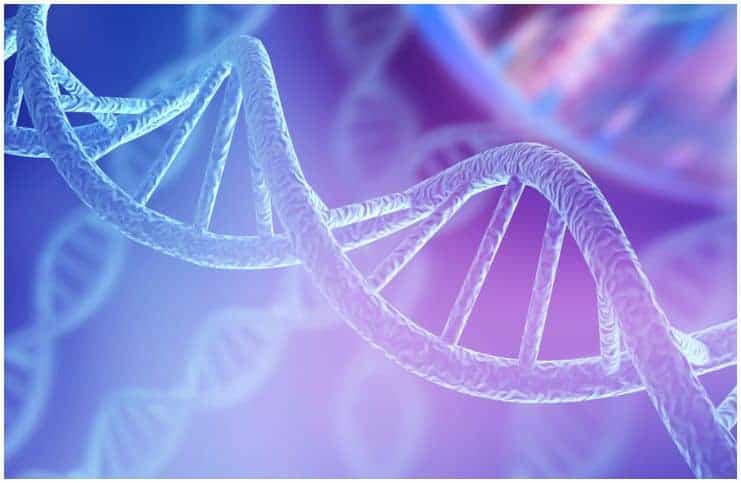Here are the top 20 interesting facts about neurofibromatosis:
#1 It is a genetic disorder that disturbs cell growth in the nervous system, which leads to multiple soft tumors (neurofibromas).
#2 Tumors begin in the supporting cells which make up the myelin sheath (the thin membrane which protects and envelops the nerves) and the nerve, rather than the cells which actually transmit information.
#3 These tumors may be harmless or may compress tissues and nerves and ultimately lead to serious damage. There is about a 5 percent chance that an NF tumor will ever become cancerous, nevertheless, many patients with this disorder receive radiation and/or chemotherapy to help shrink their tumors.
#4 Many times these benign tumors are wrapped around organs and nerves making them painful and inoperable. Occasionally, these tumors can be surgically removed. Also, this condition can cause bone abnormalities and “café au lait” spots (also referred to as skin discolorations).
#5 All forms are autosomal dominant genetic conditions that may be the result of a new or spontaneous mutation in the egg cell or sperm or can be hereditary from a parent who has this genetic condition.
#6 People of all ethnic backgrounds may develop this genetic disorder. In the US, approximately 1 in 3,500 people have NF1, 1 in 25,000 have NF2, and 1 in 40,000 have schwannomatosis.
NF1
#7 Neurofibromatosis type 1 (NF1) also called von Recklinghausen NF, is a very common genetic condition that manifests itself at birth or by the time the child is 10 years old.
#8 About 1 in every 2,500 people is born with this type. Despite the high prevalence of neurofibromatosis type 1, information about its effect on mortality is limited. It is characterized by physical changes in skin appearances and bone abnormalities. Also, people with NF1 may develop benign nodules on the colored regions of the eyes.
#9 Additional features include – scoliosis, short stature, speech disorders, headaches, learning disabilities, and attention deficit disorder. Also, individuals with NF1 have a higher increased risk of developing other cancers, such as – cancer of blood-forming tissue (leukemia) and brain tumors.
#10 Some children with NF1 may also have plexiform neurofibromas (a benign tumor of peripheral nerves). These are a different type of neurofibroma and are frequently present at birth, however, they might not be visible until later. Children with NF1 can have difficulties developing social skills and forming friendships.
NF2
#11 NF2, also called acoustic NF (occasionally bilateral acoustic NF or BAN), is a rarer type and occurs in 1:25,000 people. It is characterized by slow-growing tumors on the 8th cranial nerve. The pressure of these tumors damages the retina causing vision problems.
#12 Tumors usually affect both the right and left auditory nerves. Early-onset of NF2 is linked with a higher risk of death. Complications of tumor growth can also include – fluid buildup in the brain, numbness in the legs or arms, and clouding of the lens (cataracts).
READ MORE: Interesting Facts About Pneumonia
Schwannomatosis
#13 The third type of this genetic disorder is called schwannomatosis. It is a very rare type (approximately 1 in 40,000 people) of neurofibromatosis which commonly affects individuals after the age of 20.
#14 Schwannomatosis causes benign tumors (about 66 percent of individuals) to develop on the spinal, skull (cranial), and peripheral nerve. Also, the majority of patients with schwannomatosis have considerable pain. In some extreme cases, the pain will be disabling and severe.
READ MORE: Interesting Facts About Staphylococcus Aureus
Causes
#15 All forms are caused by a defective gene. NF-1 results from a defect on chromosome 17. NF-2 occurs because of a defect on chromosome 22. The NF2 gene regulates the production of a protein known as merlin/schwannomin which has an important role in suppressing the development of certain tumors.
#16 Fifty percent of individuals who develop this condition inherit it from a parent. The type the child inherits will be the same type the parent has, nevertheless, the severity and the characteristics which the child will have cannot be predicted.
#17 The other fifty percent of patients develop it as a result of a spontaneous change in a specific gene in a sperm or egg cell. These mutations occur mainly in paternally derived chromosomes, and the chances increase with advanced paternal age.
READ MORE: Interesting Facts About Syphilis
Treatment
#18 There is no cure. Treatment is focused on controlling the symptoms. In most sufferers, careful treatment and monitoring can help individuals with NF1 live a full life.
#19 However, depending on the type of disease, treatment may include radiation therapy, surgery to remove tumors, and medicines. But, many symptoms, like café au lait spots, do not require treatment.
READ MORE: Interesting Facts About Malaria
Prevention
#20 If you have this genetic condition, or if you have a family history of the disorder, it is recommended to have genetic counseling.
Images source – Shutterstock
READ MORE: Interesting Facts About Meningitis
References http://journals.plos.org/plosone/article?id=10.1371/journal.pone.0178639 https://ojrd.biomedcentral.com/articles/10.1186/s13023-017-0756-4 https://academic.oup.com/brain/article/126/1/152/299384
